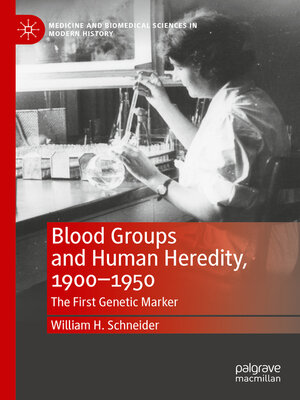Blood Groups and Human Heredity, 1900-1950
ebook ∣ The First Genetic Marker · Medicine and Biomedical Sciences in Modern History
By William H. Schneider

Sign up to save your library
With an OverDrive account, you can save your favorite libraries for at-a-glance information about availability. Find out more about OverDrive accounts.
Find this title in Libby, the library reading app by OverDrive.



Search for a digital library with this title
Title found at these libraries:
| Library Name | Distance |
|---|---|
| Loading... |
This monograph presents a detailed analysis of the beginning and rapid establishment of blood group research in the first half of the twentieth century. The main theme of this book is how blood groups were used as a scientific explanation of differences in race, health, and human behaviour. The discovery of the inheritance of blood groups, and their uneven distribution among various human populations quickly developed into a new field of scientific study in various countries around the world. Almost as quickly, the discoveries were studied as genetic markers of race, disease, and behaviours such as crime, insanity, and temperament. The time scope of coverage is the first half of the twentieth century, beginning with Landsteiner's discovery of blood groups and ending with the period following the Second World War when the research was picked up again and became part of the revolution in human genetics accelerated by the discovery of the double helix. By this time, blood group genetics had undermined the very concept of race and became the foundation of population genetics. The focus on the formative period of blood group research complements the recent resurgence of interest in the subject by providing in- depth background and a base for further research.







